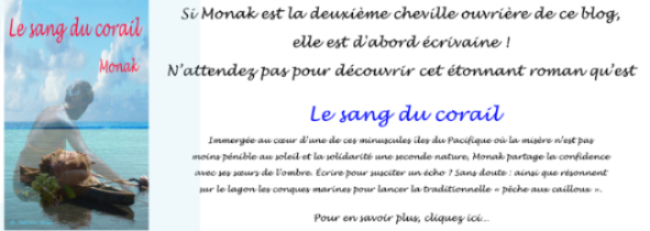The deserted
island
A century ago already the island of Mehetia, last
active volcano of French Polynesia, is again deserted, a victim of the new
advancements of the navy.
17 ° 52 '30.07 "S
latitude, 148 ° 4' 3.19" W longitude. Needless to note these details:
there is little chance you will never be around here somewhere. And besides,
it's forbidden...
 |
| Violent, wild and deserted Mehetia |
Outside the norm, outside the
shipping lanes, timeless, Mehetia is, for a century now, once again become an
island outside the world, abandoned by men.
The Island of Mehetia and geography
Located about 110 km
east-south-east of Tahiti, Mehetia is the youngest
volcanic geological formation of the Society Archipelago.
 |
| The summit crater |
In fact, the island is the tip
of an underwater volcano 4,000 meters high, still active.
The only known eruption may
have occurred on 5 March to December 1981, at 1600 m depth.
Mehetia is crowned by two
craters, one of which is the highest point of the island. Mount Hiurai or
Fareura, 435 meters, and Mount Teruato.
 |
| Mehetia: not very hospitable, visibly |
Mount Teruato provides this
valuable feature to offer a crater 220 meters in diameter, in perfect
condition, although cluttered with screes and vegetation.
At Mehetia, no coral reef nor
lagoon, beach neither. The steep slopes of the volcano plunge directly into the
ocean.
Mehetia and the explorers
June 17, 1767, Samuel Wallis, the first of all, can
see the Island of Mehetia. But it was only the next day he actually
approaches.
On the night of June 17 to 18,
tells his diary, fires show that the island is inhabited. In the morning, a few
canoes led by three men stand away from the Dolphin.
 |
| Mehetia in its heyday... |
Wallis sent two boats to
approach the island. They return just two hours later! Officer Furneaux's
report explains: "The people, he said, consists of several hundred natives
whose aggressive attitude forced us to open fire, but without hitting them
(...)".
Persuaded to be near the
Austral continent, Wallis cast off and sailed, unknowingly, to Tahiti.
Less than a year later, April
2, 1768, Bougainville is passing off the coast of Mehetia without disembarking.
 |
| Mehetia seen by a sailor in 1849 |
Finally, Domingo de Boenechea,
a Spanish explorer, aboard the ship Aguila was the first, who actually
recognized the island. He named it San Cristobal. Mehetia was well inhabited: it
then had about two hundred inhabitants.
The history of Mehetia
If no one knows when Mehetia
was invested by the Mā'ohi people, we know it was long, and probably from the
beginning of settlement, under the domination of Western Tuamotu.
It was settled permanently and
played a key role in trade and political relations between the Tuamotu Archipelago and Society
Islands.
 |
| And yet: an essential island for the yesteryear Polynesians |
It was indeed an indispensable
stage for the Polynesian dugouts that ensured the exchanges between the two
archipelagos.
Someday, the Ari'i pa'umotu *
** who also reigned over the island, exchanged his wife with a significant
Ari'i of Tahiti. When his first child was born of this relationship, the
possession of Mehetia was transferred from Tuamotu to Tahiti.
The transportation revolution
(sailing ships and steamships) sounded the death knell for the prosperity of
Mehetia.
 |
| The only livable area of Mehetia |
The last permanent residents
of the island were reported in the early twentieth century. Since, the island
is deserted. It is now attached to the commune of Taiarapu East, a small town
of Tahiti's peninsula.
Mehetia or the origins of a name
The first known name of the
island is To'ohoa, which could mean "fully erect" and be
linked to particularly steep sides of the top. But the name could also be
derived from hoa, refuge place of populations in case of conflict.
What is certain is that the name
of To'ohoa is found on a comparable Island of New Zealand.
 |
| Mehetia: a refuge or a prison? |
But the original name of the
island, reached us through legends, was Meketu in pa'umotu and Me'etu
in reo Tahiti ***. This name would have belonged to the princess who
accompanied a large group that colonized the island after the great migrations
to New Zealand.
It was during King Tu's
accession to power, from the line of Pomare, the name of the island had to
change, Tu getting tabu (sacred, prohibited). So, it became Me'etia for
the Tahitians and Meketia for the Pa'umotu.
Mehetia today
Uninhabited for a century,
Mehetia only receives rare scientific missions and few privileged visitors who
have obtained permission to land there.
 |
| An island without water, so truly deserted... |
Here, a seismograph is
installed permanently, with a mission to monitor the hot spot of the South of
Society Archipelago, last area in French Polynesia, where seismic activity is
observed in the depths of the Pacific.
Mehetia Island is privately
owned, and it is said that a treasure would be buried in the hold of a ship
that came to break on its inhospitable coast.
 |
| Today, a bird sanctuary |
Meanwhile, it’s a welcome
sanctuary for several species of birds that live there safe from any predator.
Glossary:
* Ari'i: Head, king…
** Pa’umotu: on the Tuamotu Archipelago.
The inhabitants of the Tuamotu are Paumotu.
*** Reo Tahiti: Tahitian
language
An article
of Julien Gué
Translated from French by Monak
Copyright
Julien Gué. Ask for the author’s agreement before any reproduction of the
text or the images on Internet or traditional press.



Aucun commentaire :
Enregistrer un commentaire
Cet article vous a fait réagir ? Partagez vos réactions ici :